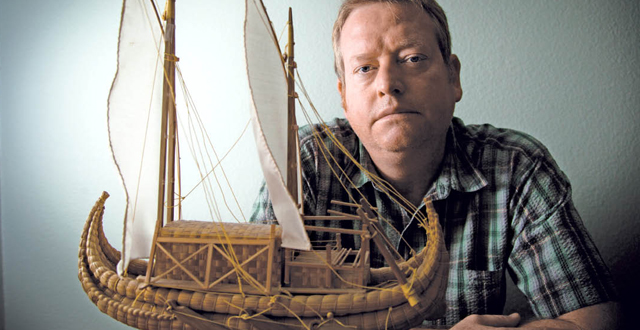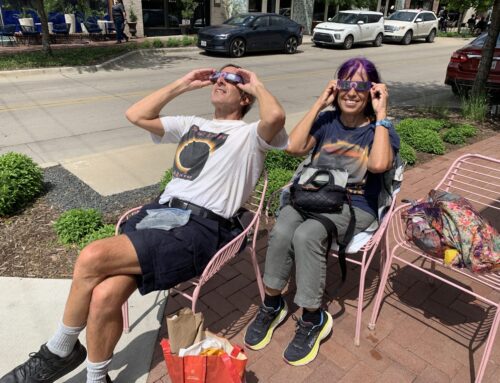Eight people, one reed boat with cotton sails and no engine, 2,500 miles. That’s how Greg Dobbs got to Easter Island.
He and seven other people sailed from the coast of Chile to Easter Island on a boat made of reeds harvested from Lake Titicaca. Their vessel, Veracocha, is the only reed boat to make that journey in modern times.
“At the turn of the millennium, I went down to Chile to meet a friend of mine who had been in Costa Rica,” says Dobbs, who lives in Oak Cliff and owns J.D. Tree Service.
The friend’s childhood hero was Thor Heyerdahl, the legendary Norwegian adventurer who in 1947 sailed a balsa raft named Kon-Tiki 4,300 miles from Peru to French Polynesia.
Dobbs’ friend was preparing for the reed boat-trip, and he invited Dobbs along. Their journey would be challenging at times, but in hindsight, Dobbs says, they were lucky to arrive at Easter Island after only 47 days at sea.
They set sail Feb. 25, 2000, and they sailed the Humboldt Current to test Heyerdahl’s theory that ancient migration to Polynesia could’ve come from the West and not just from Asia.
“It was a very beautiful experience, getting out there and seeing the blue, blue water and the stars,” Dobbs says. “We saw a lunar eclipse, which we didn’t even know what was happening.”
Their supply of fruits and vegetables ran out after a few weeks, but they had plenty of water and staples such as rice. The hull of their 70-foot ship attracted fish to its shade. So whenever they wanted meat, they could drop down and reel in tuna and mahi mahi from the ocean.
The boat had no running lights, and they had a few close calls with freighters in the night. Once, the wind died and the boat lulled for nearly four days, drifting in the middle of the ocean with no land in sight.
The captain, who became a celebrity in Chile because of this mission, called in daily reports to the media.
“We just read and fished and took turns at the tiller and mapped our way,” Dobbs says.
Dobbs says he felt a surge of emotion when Easter Island finally came into view. Upon their arrival, the locals treated the sailors like rock stars. They stayed on the island about a month.
“We were invited to locals’ homes, and they had an itinerary for us every day,” Dobbs says. “We got to see a lot of stuff that tourists don’t see.”
He met men who can free dive 30 feet to spear a fish. They ate sea urchin — a sushi chef’s prize — pulled straight from the sea, cracked on a rock and squeezed with lemon.
Almost every night, the locals played drums and ukuleles. They drank Chilean wine and feasted on ceviche.
“They would put flowers on you, and they made up a song about our expedition and sang it for us,” Dobbs recalls.
[quote align=”left” color=”#000000″]“We were invited to locals’ homes, and they had an itinerary for us every day. We got to see a lot of stuff that tourists don’t see.”[/quote]They visited, went fishing, rode horses and slept on the beach. Once, Dobbs slept next to one of the larger-than-life mo’ai, the mysterious ancient statues for which Easter Island is famous.
Dobbs has been an adventure traveler since college, when he traveled to Central America and, with friends, sailed a schooner from Guatemala to Mexico to Cuba.
Dobbs’ experience on the Veracocha was so great that in 2003 he returned to Chile for a reed-boat expedition that was to travel to Easter Island and then all the way to Australia.
On the day they embarked, the Chilean Navy pulled their ship past the breaker, but the rope came loose and washed the ship back to the beach. It was still seaworthy, but it had a tilt.
“That was a sign probably not to go, but we went anyway,” Dobbs says.
Winds pushed them toward southern Patagonia, and on this voyage, they were at sea 78 days. As they approached Easter Island, their boat was sinking, and the navy had to tow them in. They never made it to Tahiti and Australia.
“I think the first trip was just beginners luck,” he says.








